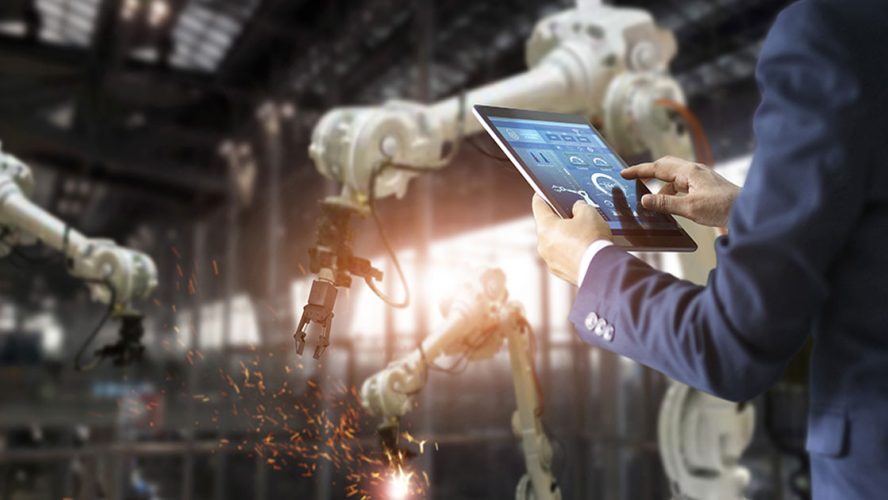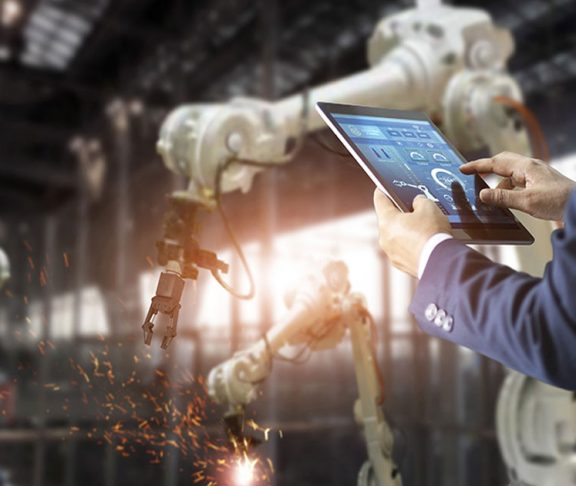For manufacturers, the use of artificial intelligence (AI) is all about the data. Inexpensive sensor technology and widely available connectivity on the shop floor have created a flood of product and process data.
So, what data is the most critical, and where to begin? Is it technology in search of a problem or are there tangible business benefits for manufacturers?
A 2020 study on digital transformation by the American Society of Mechanical Engineers (ASME) found that 96 percent of manufacturers see digital transformation (including AI) as revolutionary technology in improving competitive advantage, but 46 percent say their organization is just keeping up or lagging in technology implementation.
AI and machine learning (ML) have tremendous impact because of the ability to predict when specific events will occur, and to allow for optimal time between capital expenditures, maintenance, and product inspections. AI can increase manufacturing productivity and performance, improve quality, accelerate product development cycles, and increase safety.
“In addition to having faster production times, the ability to use AI and ML in historical data sets to predict patterns of production costs by reducing errors, post-processing and material processing time yields a real-time control over the fabrication process,” said Dima Elissa, CEO and founder of VisMed3D, a global Healthcare TechnologyTM research and consultancy firm based in Chicago.
AI is moving manufacturing operations from a reactive world to a more proactive and predictive reality. Predictive maintenance is a key advantage of AI — allowing manufacturers to balance their equipment cost, performance, and risk with data-driven decisions. Data analytics combine historical and real-time data to reveal previously unknown patterns and processes. Imagine a time when it is commonplace for a shop floor supervisor to report, “The robots called, they replaced the tooling and we’re back online.”
Machine reliability and wear can vary greatly depending upon the process used, how quickly a part is machined, the hardness of the material, inherent vibrations, temperatures, and more. Often the same type of machine can wear differently. AI for predictive maintenance allows real-time machine data gathered by sensors and data analytics to accurately predict exactly when machines need maintenance versus performing regular preventive maintenance or experiencing breakdowns that hamper productivity. Data can confirm common drivers of downtime and in some cases, the machines can repair or reset themselves remotely, as needed.
Quality data is ubiquitous in manufacturing, and products can be easily inspected via non-destructive evaluation techniques including machine vision, CT scans, 3D scanning, coordinate measurement and more. Product data is abundant, and it can be challenging to understand where the greatest improvement opportunities lie.
AI provides data insights via predictive analytics that can identify defects before a product leaves the factory, and machine learning can correct the defect or reject the flawed item automatically. This “as-built” data is fed back into the manufacturing process to drive overall improvements in real time and improve AI accuracy.
And amid the recent pandemic’s disruption of production and supply chains, data-driven manufacturing organizations have increased their competitive edge, so the need to implement these advanced technologies is more urgent than ever.
In fact, ASME is working to spread the word about AI and other advanced digital technologies by convening engineers with data scientists and other experts in a series of upcoming events. One such event is The Digital Twin Summit, to be held virtually in spring of 2021, which will feature experts sharing success stories of how digital transformation has accelerated product development, improved product quality and reduced operation and maintenance costs on the manufacturing floor.
Given this rapidly changing landscape of manufacturing, ASME recognizes the need for up-and-coming engineers to understand how AI will impact their day-to-day jobs and career opportunities. Ashley Huderson, Ph.D., ASME director of engineering education and outreach, said her team works with mechanical engineering department heads at universities across the United States to “keep them updated and abreast of the latest innovations and research on engineering education, helping to drive and innovate curricula.” Huderson encourages engineering students to “be flexible but intentional with their academic career. Being flexible will allow them to see the interdisciplinary nature of AI with other subjects, embrace it, and help innovate it.”

